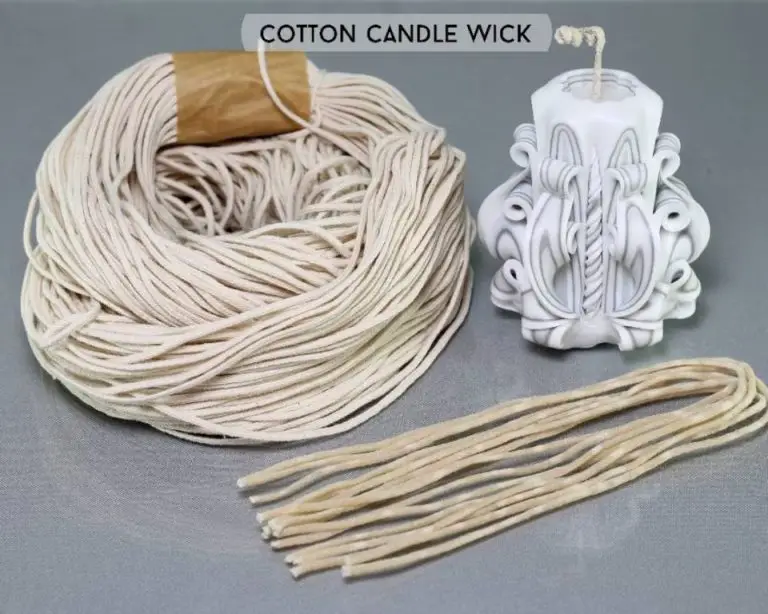Is Shea Butter Soap Base Good?
Shea butter is a fatty oil derived from the nut of the African shea tree (https://www.amazon.com/Shea-Butter-Pound-Earths-Secrets/dp/B017MFOOXE). It has been used for centuries in Africa as a moisturizing and healing agent for skin and hair. Shea butter is rich in vitamins A and E and essential fatty acids, making it an excellent emollient. When used in soap making, shea butter adds creaminess and moisture to the lather. It also provides skin-conditioning properties that can soothe dryness, eczema, and dermatitis. Shea butter soap base contains a pre-made mixture of shea butter and soap making oils, allowing hobbyists and small businesses to skip the complex steps of rendering saponified oils from scratch. This article will explore the benefits and drawbacks of shea butter soap base compared to making shea butter soap completely from scratch.
Benefits of Shea Butter
Shea butter is most commonly used for its exceptional moisturizing properties. It contains fatty acids that help nourish dry skin and restore elasticity. According to Cleveland Clinic, shea butter is often found in moisturizers and lotions for people with dry skin because it contains linoleic, oleic, stearic, and palmitic acids that soften and hydrate the skin (1). Shea butter is an emollient, meaning it smooths the skin and seals in moisture. A report by Aveeno showed that using shea butter can help skin retain moisture and feel softer (2).
The fatty acids in shea butter help to repair a damaged skin moisture barrier. By restoring hydration and elasticity, shea butter improves skin texture, reduces flakiness, soothes irritation, and prevents chafing. Shea butter is able to moisturize without clogging pores, making it suitable for all skin types. It helps restore suppleness to dry areas like elbows, knees, hands and feet.
In addition to hydrating skin, shea butter has anti-inflammatory properties that help calm and soothe skin conditions like eczema. The vitamins A and E in shea butter aid in cell regeneration and healing. Shea butter provides relief from itching and peeling caused by dryness. With regular use, it can lessen the appearance of stretch marks, scars and wrinkles.
Drawbacks of Shea Butter
One of the main drawbacks of shea butter, especially when used at high concentrations in products like body butters, is that it can feel heavy and greasy on the skin. Shea butter is highly emollient and moisturizing, but it is also quite thick and dense. This can lead to a greasy residue being left behind on the skin (“Why is my body butter greasy?”. https://www.humblebeeandme.com/why-is-my-body-butter-greasy/).
There are a few ways to combat the greasy feel of shea butter in body products:
- Use shea butter in moderation – start with 10-20% of the formula and adjust from there
- Incorporate powders like arrowroot, cornstarch or kaolin clay that help absorb excess oils and reduce greasiness (“How to Make Body Butter Less Greasy”. https://tweakandtinker.net/body-butter-less-greasy/)
- Add lighter butters and oils like cocoa, mango or avocado that blend with and dilute the thick shea butter
- Whip or blend vigorously to introduce air and make the texture lighter
With some care taken in the formulation, the incredible skin benefits of shea butter can be harnessed while avoiding a heavy, greasy feel.
Making Soap with Shea Butter
When making soap from scratch with shea butter, it’s important to use the right amount to get the benefits without negatively impacting the soap. According to soapmaking experts, the ideal amount of shea butter to use in cold process soap recipes is generally 10-25% of your total oils/fats.
Using too little shea butter may not provide enough skin moisturizing properties in the final bar. Conversely, using over 25% shea butter can make the soap soft or prone to dosing issues. The fatty acids in shea butter can accelerate trace in cold process soap making. So it’s best to avoid going over 25% shea butter if you want to have enough working time.
A good starting point is using shea butter at 15-20% of your recipe oils. This provides noticeable skin benefits without interfering too much with the soap making process. Monitor how quickly the soap batter traces based on your exact percentage. Adjust accordingly in future batches if needed.
When combining shea butter with other oils like olive, coconut, or palm, the shea imparts a creamy lather and skin-nourishing qualities. Just be careful not to overdo it, as too much shea butter can make the bars slimy or soft. Monitor your recipes and tweak the percentages over time to find your perfect shea butter soap balance.
Shea Butter Soap Base
Shea butter soap base is a pre-made soap base that contains shea butter as one of the main ingredients. The base allows soap makers to create custom soaps without having to make soap completely from scratch. Some of the common ingredients found in shea butter soap bases include:
Glycerin – Added for extra moisturizing properties. Glycerin is a humectant that helps draw moisture into the skin (1).
Purified Water – Provides moisture to the soap base.
Sodium Stearate – A sodium salt created from stearic acid that helps produce lather and hardness in soap (2).
Sorbitol – A moisturizing sugar alcohol commonly used in cosmetics (3).
Sodium Oleate – The salt form of oleic acid that also contributes to lather and hardness (4).
Shea Butter – Typically makes up 5-15% of the soap base. Provides skin moisturizing properties and vitamins (5).
Other oils – Additional oils like coconut, olive, palm, or castor may be included in smaller amounts.
The ingredients in shea butter soap base provide a nourishing bar of soap with good lather. The shea butter content in particular helps moisturize and soften skin.
Benefits of Shea Butter Soap Base
Shea butter soap base provides a variety of benefits for the skin. Some of the main benefits include:
-
Moisturizing: Shea butter is a rich moisturizer that helps hydrate the skin without clogging pores (1). It helps restore moisture and elasticity to dry skin.
-
Easy to Use: Shea butter soap base is already formulated and ready to use. There’s no need to make soap from scratch. Just melt, add fragrance or color if desired, and pour into molds (2).
-
Gentle: Shea butter is soothing and gentle on sensitive skin. It does not generally cause irritation, redness, or allergic reactions.
-
Anti-aging: The vitamins A and E in shea butter help reduce wrinkles, fine lines, and other signs of aging. It helps the skin maintain elasticity.
-
Smoothing: Shea butter has the ability to smooth rough, dry skin patches and create an even skin tone.
Overall, shea butter soap base provides an easy way to gain the moisturizing, anti-inflammatory, and smoothing benefits of shea butter for the skin.
Drawbacks of Shea Butter Soap Base
One potential drawback of using a premade shea butter soap base is that you have less control over the specific ingredients and their qualities. When making soap completely from scratch, you can select high quality oils, butters, and other additives. With a premade base, you don’t know all the details of where the ingredients came from or how they were processed.
According to the Soap Making Forum (https://www.soapmakingforum.com/threads/how-much-shea-butter-is-too-much.62326/), too much shea butter in soap can inhibit lathering. With a soap base, it may be difficult to determine exactly how much shea butter is included. If lather is important to you, this could be a drawback of using a premade base rather than tailoring your own recipe.
Additionally, some soap makers prefer to use all natural ingredients. With a premade base, you don’t know if synthetic additives were used. You have to rely on the manufacturer’s claims. If using only natural ingredients is a priority, the lack of transparency with a soap base could be seen as a drawback.
Shea Butter Soap Base vs From Scratch
Both shea butter soap base and handmade soap from scratch have their advantages and disadvantages. Shea butter soap base is a quick and easy way to make soap without needing to use lye or going through the cold process method. The base already contains oils like shea butter, coconut oil, palm oil, etc. and you simply melt, add colors/scents, and pour into molds. The drawback is you have less control over the exact ingredients and their quantities.
Making soap completely from scratch allows you to customize the oils to your liking and create personal recipes. However, it requires handling lye, going through a 4-6 week curing process, and more safety precautions. The cold process method also takes more time and experience to master. Both methods produce nice shea butter soap, so it depends on your goals and soapmaking style.
Best Uses for Shea Butter Soap
One of the best uses for shea butter soap is for people with sensitive skin. Shea butter has natural anti-inflammatory properties that help soothe skin irritation and reduce redness (source). The fatty acids in shea butter, like oleic acid and stearic acid, help strengthen the skin barrier and lock in moisture. This helps prevent dryness that can worsen sensitive skin conditions like eczema or psoriasis.
Clinical studies have shown shea butter’s ability to reduce skin inflammation and improve overall skin quality (source). The anti-inflammatory triterpenes found in shea butter calm irritation and help sensitive skin heal. Using shea butter soap regularly can help keep sensitive skin hydrated and protected.
Shea butter is well tolerated by those with sensitive skin when used in its pure, unrefined form. Since it contains no harsh detergents or chemicals, shea butter soap avoids common irritants that can trigger sensitive skin. It’s a natural, gentle cleanser suitable for daily use by those with sensitivities.
Conclusion
In summary, shea butter soap base does offer some benefits but also has some drawbacks. The many moisturizing and antioxidant compounds in shea butter can provide skin softening and anti-aging properties when used in soap. However, the shelf life may not be as long as soap made from scratch. Shea butter is rich in vitamins A and E which are beneficial for skin health. But it can make the soap softer and less hard than some may prefer. Using a premade shea butter soap base avoids the complex process of saponifying oils into soap yourself. Though you sacrifice being able to customize the oils, fragrances and properties when using a base. Shea butter soap base can provide an easy shortcut to create great soaps with skin loving ingredients. Though making it from scratch allows for a more tailored soap making experience.





